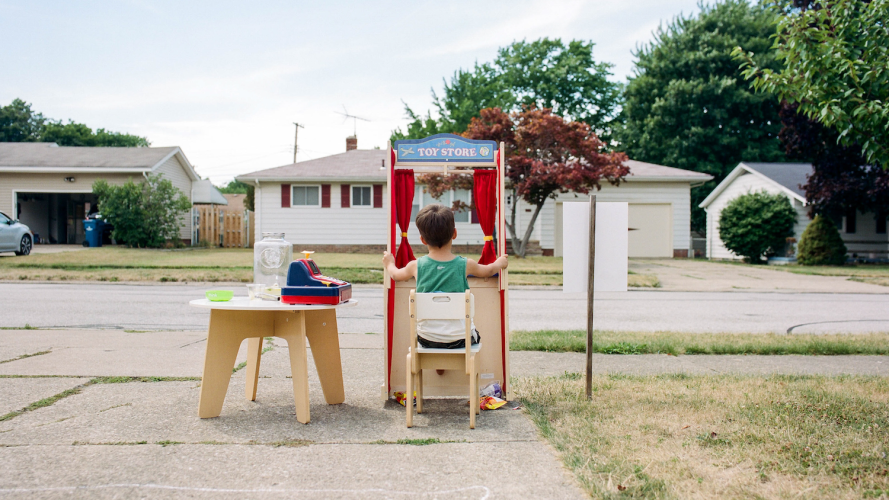The world’s largest cosmetics company is touching up its advertising strategy.
L’Oréal saw global sales fall slightly in the first quarter because of store closures, so it cut back on advertising spend. CEO Jean-Paul Agon says demand for the company’s products remains high, but the supply is constrained. Ecommerce sales are up more than 50% compared to last year but don’t replace the in-store experience.
“It can be even frustrating to advertise on products that consumers just can’t buy,” he explained.
Across the world, advertisers are moving fast. Total ad spend was down about 15% compared to last year, according to Numerator, while categories such as travel and auto cut budgets more than 50%. Commuter-driven channels such as radio and out-of-home were down 30-50%, while digital outlets such as search, digital video, and mobile were up, driven by a surge in homebound usage.
Advertisers like L’Oréal are adapting on the fly to unprecedented changes in economics and buyer behaviors, shifting channel preferences, formats, and creative tactics. And while there’s no formula for advertising during COVID-19, the best advertisers use battle-tested strategies.
Based on the experience of Salesforce customers and members of The CMO Club, we assembled a brief pandemic playbook for advertisers. We call it the “Four I’s” Framework.
1. Insight – listen with empathy
All crises change customers’ attitudes and spending patterns in ways that are not always easy to predict. Leading advertisers stay very close to their customers, listening with empathy to understand how to adapt their strategies.
In a recent survey, consumers said the messages they’d like to see from advertisers now should be “safe” and “hopeful.” One ad agency creative director summed up the shift in consumer attitudes like this: “The anxiety, the fear, the isolation, the lack of routine …. people want to see the soul of the brands – they want to feel comfort.”
In the early days of the crisis, brands scrambled to pause long-planned campaigns that suddenly seemed tone-deaf. Triage is now complete, and brands are focused on longer-term responses. Customer research tools such as surveys and online focus groups can yield insights. Social listening to understand what your audience says about you, your competition, and your industry is critical for brands, and that’s part of the reason Salesforce made listening products available as part of the Work.com initiative.
The right response always starts with the customer’s reality. Knowing many are worried about their financial outlook, Ford launched a campaign promising payment deferrals to people who lost their jobs. Aware that St. Patrick’s Day needed a makeover this year, Guinness retooled its message to focus on communities and offered donations to affected neighborhoods.
Meanwhile, many advertisers are learning shelter-in-place leads to both literal and psychological nesting behavior. Advertising that emphasizes home and hearth almost tripled in the last two months compared to last year. Baby-related advertising doubled. And despite ubiquitous mask-wearing and social distancing, categories such as skincare and hair dye are booming.
Harvard researchers studied the patterns of companies that succeeded during downturns. They found leading brands were those that were most in tune with “customers’ changing needs.” Audience segments changed based on stress-driven attitudes, as some consumers reduced spending, others shifted priorities, and still, others spent more on categories such as “affordable luxuries.”
No single strategy sufficed, but empathetic listening always paid dividends.
2. Impact – focus on what works
A crisis can be seen as “an abrupt and brutal audit,” separating effective from ineffective tactics with precision. The same is true for advertising, as marketers improve efficiency by focusing more on tactics known to work.
For example, consumer products leader Unilever has seen sales remain steady, said chief executive Alan Jope in a recent earnings call. But it’s halted ad production in many areas and shifted spending out of channels such as out-of-home. Jope says the team is “dialing up areas with strong ROI.”
Many brands are seeing strength in ecommerce, and are shifting ad spend to support it. According to the Salesforce Q1 Shopping Index, ecommerce was up 20% on average, driven by essential goods and discounts. Even nontraditional categories benefit. Beverage manufacturer AB InBev’s direct-to-consumer Ze Delivery service in Brazil reported more orders in April than in all of 2019.
And many direct-to-consumer (DTC) brands are also winning. Despite shuttered outlets in Ulta and Nordstrom, DTC skincare brand Tula reported record sales last month. They’re investing in influencer marketing and are testing over-the-top connected TV ads tied to news cycles.
Conventional wisdom holds consumers are less loyal and more price conscious during crises. Some brands report success combining promotional bursts with lower prices on direct-response channels such as paid search and social. (Ad prices on Facebook and Google are reported to be up to 30% lower than last year, in some categories.) “Simple promos combined with low CPCs [cost-per-clicks] are getting explosive results,” said one agency exec.
3. Improve – test and fail to learn and scale
Failing to plan is planning to fail, but there is a downside to carefully-cultivated plans during a major crisis: they provide a false sense of security.
Organizational theorist Karl Wieck, an expert in corporate resilience, says a trait shared by all high-functioning companies in a crisis is an ability to be nimble, improvise, and learn.
“I advise leaders to leap in order to look,” says Wieck.
Now is a time to test new ideas without harming the brand. McDonald’s displayed a spirit of adventure when it separated its “Golden Arches” logo to illustrate social distancing in Brazil. Burger King lit up social media with a subtle stunt, liking influencers’ social media posts from 2010 to promote the relaunch of its funnel fries. Proctor & Gamble succeeded on a larger scale with a dance-themed campaign featuring TikTok influencer Charli D’Amelio, also promoting social distancing, that had 10 billion views.
Test and learn is a culture rather than a tactic. It requires a structured approach. For example, the food company McCormick analyzed Pinterest search results to discover consumer trends. It identified a strong interest in bread making – not surprising to those of us who find ourselves overloading on carbs. It fielded recipe ads using its products and adjusted based on consumer response.
And Finnish retailer HOK-Elanto combined nimble messaging with social responsibility in a campaign that ran an optical-illusion ad in newspapers. The catch: the message was only clearly visible from six feet away.
4. Investment – stay strong over the long term
It is almost always a mistake for advertisers to neglect the long-term view in a crisis. While short-term tactics can yield results, it is more effective for long-term health to invest in upper-funnel campaigns and brand building. This is particularly true when competitors are cutting back and ad rates are lower than usual.
One critical review by researchers at U.S.C. concluded: “Firms that increased advertising during a recession experienced higher sales, market share, or earnings during or after the recession.” Why? Researchers cited less “noise” in the market, lower ad rates, and the fact that simply maintaining a presence in tough times sends a signal of strength to potential customers.
These findings are well-known among advertisers, and many got the message. Spending on “brand image” advertising is up significantly, particularly on TV and radio, much of it displacing more promotional campaigns. And spending on public service announcements (PSAs), some brand-sponsored, has more than doubled.
For example, Toyota swapped a campaign promoting a sale event for an optimistic brand-centric one stressing families at home with the tagline “We Are Here For You.” And GSK, another major global advertiser, continues to invest in supporting new product launches, remembering that many successful new products – such as P&G’s Swiffer WetJet – were launched during downturns.
What does the future hold? Nobody knows, exactly. While there are some signs that ad spend may have bottomed out in April, hope is not a plan. Smart marketers stick to the “Four I’s” to maintain their clear-eyed vision in the storm.
Watch Marty Kihn’s webinar, “What’s the Future of Ad Targeting and Measurement?”




























